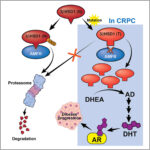Cat bite wound, though seemingly minor at first glance, can lead to severe complications if not treated promptly. Cats have sharp teeth that can puncture the skin, introducing bacteria deep into tissues. This guide provides a comprehensive overview of cat bite wounds, including their causes, risks, symptoms, and effective treatments.

Causes of Cat Bite Wounds
Cat bite wounds typically occur in the following scenarios:
- Defensive Behavior: Cats may bite when they feel threatened or cornered.
- Play Aggression: Even domesticated cats may bite during play, often unintentionally causing injury.
- Territorial Disputes: Outdoor cats may engage in fights with other cats, leading to bite wounds.
Cats’ mouths contain bacteria such as Pasteurella multocida and Bartonella henselae, which can pose significant health risks if introduced into human or animal tissues.
Risks Associated with Cat Bite Wounds
Cat bite wounds are more than superficial injuries. Potential complications include:
- Infection: Bacteria introduced during the bite can cause cellulitis or abscess formation.
- Septicemia: In rare cases, the infection can spread to the bloodstream, leading to life-threatening sepsis.
- Cat-Scratch Disease: Caused by Bartonella henselae, this condition can result in swollen lymph nodes, fever, and fatigue.
- Tetanus: Although uncommon, puncture wounds can provide an entry point for the bacteria causing tetanus.
Symptoms of an Infected Cat Bite Wound
Early recognition of infection is crucial. Watch for these signs:
- Redness, swelling, or warmth around the bite site
- Pus or fluid drainage
- Pain that worsens over time
- Fever or chills
- Swollen lymph nodes
First Aid for Cat Bite Wounds
Immediate first aid can minimize infection risks. Follow these steps:
- Clean the Wound: Wash thoroughly with soap and water for 5-10 minutes.
- Disinfect: Apply an antiseptic solution such as hydrogen peroxide or iodine.
- Control Bleeding: Use a clean cloth or bandage to apply gentle pressure.
- Cover the Wound: Apply a sterile bandage to prevent contamination.
- Seek Medical Attention: Always consult a healthcare provider, especially if the bite is deep or shows signs of infection.
Medical Treatment
Healthcare providers may recommend the following interventions:
- Antibiotics: Oral antibiotics like amoxicillin-clavulanate are commonly prescribed to treat or prevent infection.
- Tetanus Booster: If your tetanus immunization is outdated, a booster shot may be necessary.
- Surgical Intervention: Deep wounds or abscesses may require surgical drainage.
Preventing
Reducing the likelihood of cat bites is essential. Consider these tips:
- Avoid handling stray or aggressive cats.
- Recognize and respect a cat’s body language.
- Wear protective gloves when handling unfamiliar cats.
- Ensure your cat is well-socialized and spayed or neutered to reduce aggressio

